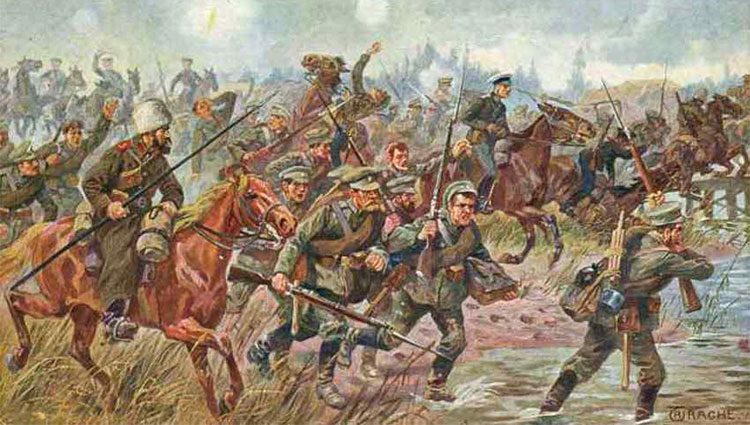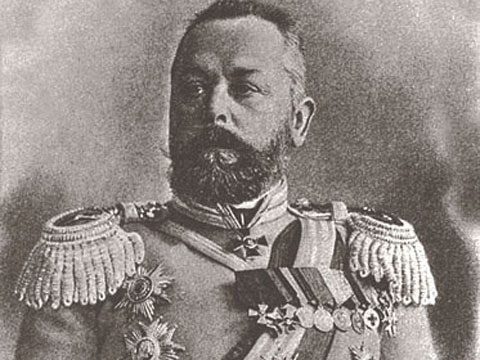The Russian Empire entered World War I and emerged with heavy losses, setting the stage for the October Revolution that ended centuries of Tsarist rule.
World War I is considered the final disaster for the Russian Empire, leading to its inevitable collapse in October 1917.

The last Tsar’s family of Russia, Nicholas II.
The Russians participated in the war against the rise of the German Empire, but the horrific casualties at that time created deep internal conflicts within Russia.
According to the Russian newspaper RBTH, 1.7 million soldiers died, and 4.9 million were wounded, which was just the beginning. After withdrawing from World War I, Russia fell into a civil war between supporters of Tsar Nicholas II and the Bolsheviks.
The Battle that Changed History
At the start of World War I with fiery momentum, the Russians were soon doused with cold water by the Germans in the Battle of Tannenberg in 1914.
On August 1, 1914, the German Empire declared war on the Russian Empire. According to the plan of Count Alfred von Schlieffen, the Germans intended to end the war quickly by defeating France in 4-6 weeks and then shifting to the Eastern Front to fight Russia.

Tannenberg was the battle that destroyed the Russian Second Army.
The Russians were aware of this and proactively launched an attack in the territory bordering East Prussia and Russia. Taking place from August 26-30, 1914, the Battle of Tannenberg helped Germany escape from the Russian encirclement on the Eastern Front. The Germans identified Russia as a potential threat, prompting the German Emperor to deploy the Eighth Army (equivalent to 100,000-150,000 troops) to defend East Prussia.
On the morning of August 26, Russia attacked East Prussia with the strength of the First and Second Armies, which had a significant advantage over Germany’s Eighth Army. However, due to poor leadership and lack of coordination, the Russian forces were quickly counterattacked and pushed back.
In analyzing this defeat, historians concluded that General Alexander Samsonov failed to coordinate and receive necessary support from the First Army under General Paul Rennenkampf. As a result, Samsonov’s Second Army fought alone against the German forces led by Generals Erich Ludendorff and Paul von Hindenburg.
Consequently, the two flanks of the Russian Second Army were successively broken. The entire Second Army was completely destroyed. Out of 200,000 soldiers in the Second Army, only 10,000 managed to escape.

General Alexander Samsonov committed suicide after the destruction of the Second Army.
On the night of August 30, instead of reporting the defeat to Tsar Nicholas II, General Samsonov walked into the forest alone and committed suicide. Samsonov’s body was only found a year later and returned to Russia.
The German side suffered only 20,000 casualties but captured 500 artillery pieces. After the decisive Battle of Tannenberg, the Russian Empire fell into a defensive position, ultimately forced to retreat from Poland and Ukraine before a large-scale offensive by the German Empire in 1915.
During the withdrawal from Poland alone, Russian forces suffered up to 500,000 casualties, severely damaging the soldiers’ fighting spirit.
The Collapse of the Russian Empire
By 1917, the Russian economy could no longer bear the weight of war, the populace was destitute, unemployment was rampant, and famine spread.
Continuous defeats caused extreme dissatisfaction among the Russian people and military. Soldiers, having suffered greatly from the war, developed a hatred for the noble officer class and lost the patriotic fervor they had at the war’s outset.
The mobilization order for 10 million men worsened agricultural production in Russia. From 1916-1917, food production decreased by 20%.
Crop failures and famine occurred everywhere. Industrial production also stagnated, leading to a high unemployment rate. Russia’s finances were in crisis.
From August 1914 to March 1917, Tsar Nicholas II spent 29.6 billion rubles on the war, three times the total revenue of the treasury. To finance the war, Tsar Nicholas II continually imposed new taxes and issued bonds to the public. The debt had risen to 36.6 billion rubles by 1917.

Leader V.I. Lenin, who successfully led the October Revolution in Russia.
By 1917, the Russian Revolution erupted. The Tsar abdicated in March 1917, and the Russian army disbanded. Lenin, as the leader of the Bolshevik Party, seized power in the October Revolution.
Faced with threats both internal and external, Lenin signed the Brest-Litovsk Treaty with the German Empire, conceding to Germany parts of Poland, Western Belarus, Ukraine, and the Baltic States, and compensating Germany with 6 billion gold marks.
This concession to Germany was based on Lenin’s expectation that the German Empire would soon fail in World War I. Thus, the treaty would become void, and Russia would no longer need to pay war reparations. This assessment proved somewhat accurate, as Germany was defeated just eight months later.
The Soviet Russia later advanced to reclaim eastern Ukraine and Belarus. Ultimately, Russia lost 842,000 square kilometers of territory (equivalent to 15.4%), which was home to 31.5 million people (23.3% of the pre-war population).
The collapse of the Russian Empire led to the formation of new countries, including Poland, Latvia, Estonia, Lithuania, and for the first time, Finland gained independence in history.
Today, the geopolitical situation in Eastern Europe remains tense, stemming from the failures of the Russian Empire in World War I, concludes the Russian newspaper RBTH.





















































